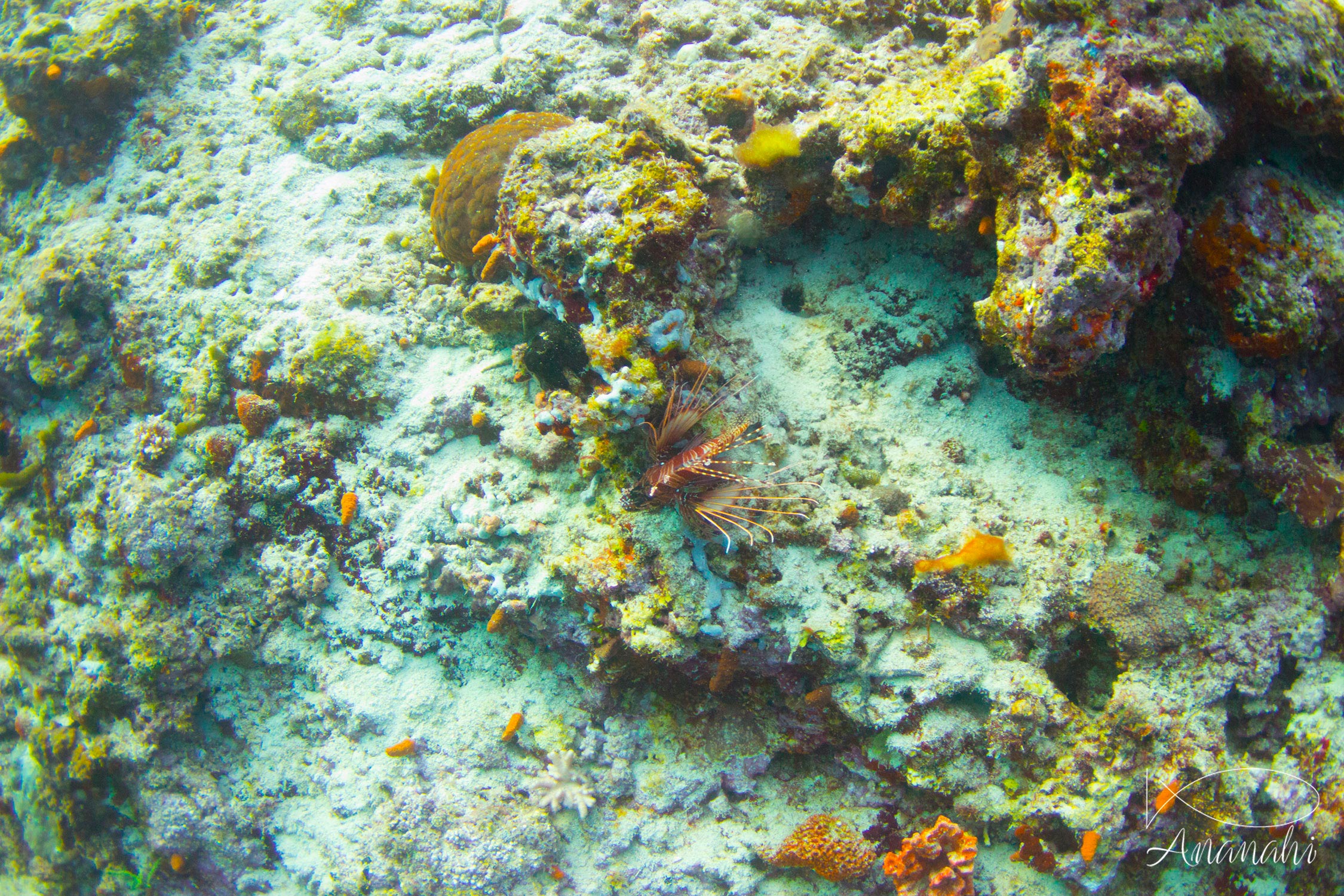
Scientific name: Pterois antennata
Size: Up to 7.9 inches
Color: White, red and brown
Distinguishing feature: White vertical lines on the reddish body. Long white spines on the dorsal or pectoral fins. On the dorsal we find red and white striped thorns.
Where did we see it: Bali and Gili, Zanzibar, Thailand, Mexico, Mayotte, Maldives, Raja Ampat

Scientific name: Pterois antennata
Size: Up to 7.9 inches
Color: White, red and brown
Distinguishing feature: White vertical lines on the reddish body. Long white spines on the dorsal or pectoral fins. On the dorsal we find red and white striped thorns.
Where did we see it: Bali and Gili, Zanzibar, Thailand, Mexico, Mayotte, Maldives, Raja Ampat
It feeds on crabs and shrimps that hunt at night.
During the day, they are found in dark places or upside down against a coral ceiling.
It is a solitary species but can be found in small groups of 2-3 individuals.
We can hear the bull shark is very dangerous because of attacks near La Réunion island.
However, tens of them are living at 600 feet from the famous beach of Playa Del Carmen in Mexico. And there are no attacks.
The whale shark is the largest fish in the world!
Some whales are larger, but they are mammals, not fish!
Turtles are in economy mode when they are sleeping. If they are woken during night, they may not have enough air to return to surface.
So, please be careful during night dives!